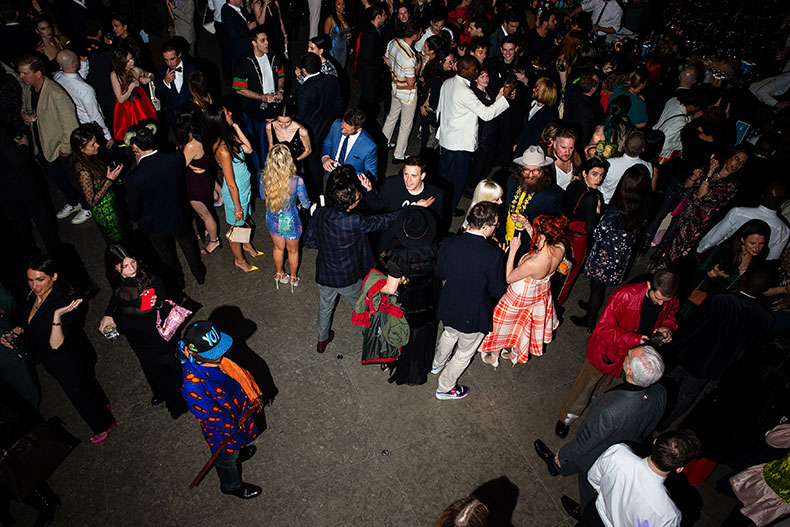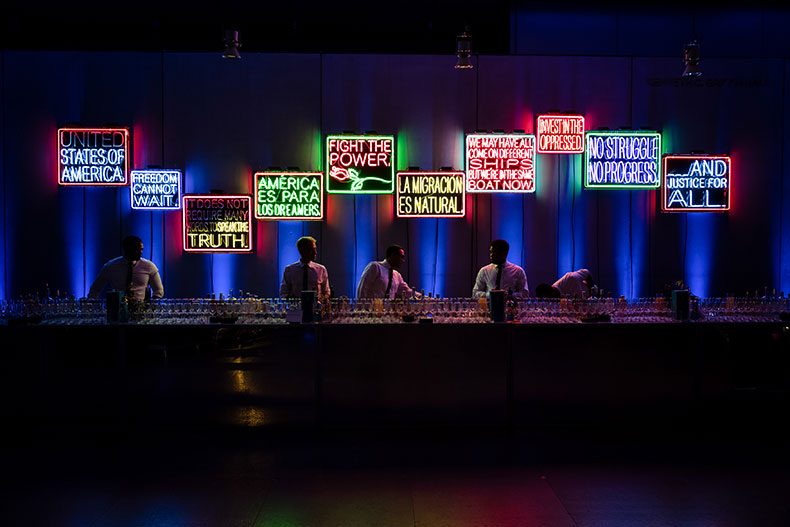Working in a museum can be a dream job for an artist. Armando Garcia, an artist and poet who works in visitor services at the Whitney Museum, says that he once emailed his poetry to the rest of the museum staff, not thinking much of it. Eventually, his work found its way to the desk of the museum director, who approached Garcia to say that he was quite moved by it. Garcia even had the opportunity to sell books of his poetry in the museum shop, and display his artwork in the staff art show, organised by the museum. He says it was an honour to have the ‘top curators and top art handlers managing my work like I’m Jeff Koons’.
Working at a prestigious museum can involve intimate access and exposure to the most experienced art professionals in the world. Many artists who land the gig can be so excited by the opportunity that they’ll take any level of compensation without question. Adam Rizzo, an arts educator at the Philadelphia Museum of Art says that when he started his job, he ‘internalised a lot of ideas about culture work. We don’t do this for the money. We don’t talk about money. This is work for a greater purpose.’
However, as the pandemic highlighted fractures in almost every industry, the past two years have made museum workers think twice about their pay. Forced to close during lockdown, many museums laid off workers who hadn’t been employed for longer than a year and furloughed others. Some museums reopened for fewer days and shorter hours. Soon after, workers at dozens of museums unionised in search of higher pay and better benefits. Some have successfully forged a contract, while others are still in negotiations.
The most recent episode in museum union activity was a protest staged outside the Whitney’s Art Party, a fundraising event for the museum’s Independent Study Program, which supports emerging artists, curators and critics. Dozens of workers handed out pamphlets to the party’s attendees (who paid $250 or more to attend) asking for higher pay and a commitment to maintain their benefits.
Guests at the Whitney Art Party on 31 January 2023. Photo: Lexie Moreland/WWD via Getty Images

One young employee who staffed the Art Party, Summer Surgent-Gough, says that working part-time as a visitor services assistant at the Whitney is her first ‘real job’ out of art school. At first, she was excited by the opportunity to work at a world-class museum, but that faded once the reality of her compensation started to settle in.
Some employees tell me that they find it frustrating to staff extravagant fundraising events, which aim to support emerging artists, while artists – like themselves – directly employed by the museum are underpaid. In fact, many of the workers in the Whitney’s visitor services department have masters-level and even doctorate degrees, but earn barely more than minimum wage.
Other employees note that they frequently chat among each other about the dissonance between the progressive themes of the museum’s programming and their treatment as employees. One museum worker says, ‘I feel the irony every day sitting at the front desk,’ above which hang neon signs by artist Patrick Martinez, displaying phrases like ‘INVEST IN THE OPPRESSED’ and ‘NO STRUGGLE NO PROGRESS.’
The bar at the Whitney Art Party 2023. Photo: Mike Vitelli/BFA.com; © BFA 2023

Many museums have recently moved to make their curation more progressive at the same time as their employees have formed unions asking for more humane working conditions. Lorenzo Conte, an artist who works in temporary exhibition programming at the Art Institute of Chicago says, ‘It’s real tough to be a museum worker presenting work that speaks one truth and to look into a meeting and hear policies that speak another.’
Still, almost every worker I speak to says that they joined their respective union out of love, not resentment, for their museums. Conte expresses that he and his colleagues choose to dedicate hours of their time outside of the 9 to 5 workday because they care about the institution and want to change it for the better. He says that a liveable wage is part and parcel of achieving the higher end that originally attracted them to the job. That is: fairer wages and adequate benefits would elevate the quality of workers’ performance and thus enable museums to serve their role in society more successfully.
Garcia expresses optimism about the Whitney’s future. He says that he is constantly inspired by the artwork displayed by the museum, and he thinks that these union negotiations are an opportunity for the Whitney to inspire other museums to treat their employees with more respect. If this trend spreads, and artists can finally find stable employment at museums with more bandwidth to focus on their craft – who knows – we might even get better art out of it too.
Zachary Ginsberg is a writer and artist based in New York City.


